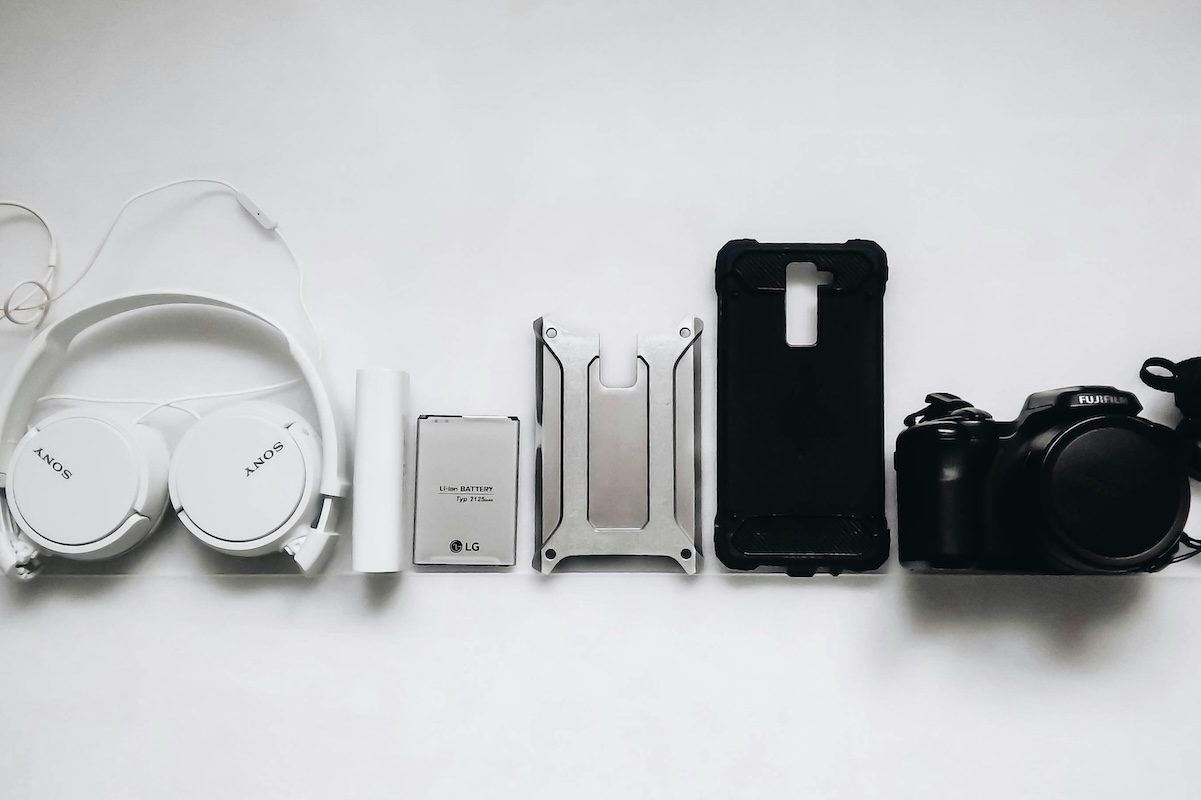
What Are the Rules About Packing Batteries and Electronics in Your Luggage? Here’s What the TSA Allows
Skip to Section
Article Summary
Putting your electronics in the wrong bag can get them confiscated, delayed, or worse—tagged for causing a fire risk.
This guide breaks down what electronics and batteries go in your carry-on versus your checked luggage, how to pack them safely, and the biggest mistakes travelers make that lead to TSA trouble.
- Spare lithium batteries and power banks go in your carry-on only — never in checked luggage.
- Installed batteries are allowed in checked bags — but carry-on is safer for anything valuable or fragile.
- Power banks over 100 watt-hours need airline approval — anything over 160 watt-hours is banned.
- Protect battery terminals with tape, bags, or cases to prevent short-circuiting during your flight.
- Breaking battery rules can lead to confiscation, fines, or flight delays — sometimes all three.
Planning your next flight and wondering if your laptop can go in your checked bag? Or are you not sure about those spare camera batteries? The TSA has specific rules about electronics and batteries—follow them, and you’ll breeze through security. Break them, and you could face delays, confiscated items, or fines.
Let’s break down exactly what you can pack where, so your gadgets arrive safely at your destination!
(Remember, rules can change, often without notice, so be sure to check with the TSA as to any specific items you’re traveling with to be absolutely sure you’re packing everything correctly).
General Electronics Rules: Carry-On vs. Checked
Electronics You Must Pack in Carry-On Only
- Lithium-ion batteries and power banks (any size)
- Spare lithium batteries of any type
- E-cigarettes and vaping devices
Electronics You Can Pack in Either Carry-On or Checked Luggage
Be sure to fully power down any of the items on this list that can be turned on, even accidentally, in your checked bag:
- Laptops and tablets
- Cameras
- Cell phones
- Hair dryers, straighteners, and curling irons
- Electric shavers
- Portable gaming devices
Electronics Better in Carry-On (Though Not Required)
Though you can technically check these items, the TSA and airlines recommend keeping valuable and fragile electronics in your carry-on to prevent damage or theft:
- Laptops and tablets
- Cameras
- Smartphones
Knowing Different Types of Batteries
Not all batteries face the same restrictions. Here’s a quick guide to the major types:
Lithium-Ion Batteries (Rechargeable)
These power most modern devices like phones, laptops, and cameras.
The General Rules:
- Installed in devices: Allowed in carry-on AND checked bags, but strongly recommended that you bring them in your carry-on
- Spare / uninstalled: ONLY allowed in carry-on bags
- Must be protected from short-circuiting (in original packaging or with terminals covered)
- For carry-on, limited to 100 watt-hours per battery
- Batteries between 100-160 watt-hours need airline approval
- Limited to two spare batteries between 100-160 watt-hours, with airline approval
- Batteries over 160 watt-hours prohibited on passenger flights
Lithium Metal Batteries (Non-Rechargeable)
Common in cameras, watches, and some medical devices.
The General Rules:
- When installed in devices: Allowed in carry-on AND checked bags, but strongly recommended that you bring them in your carry-on
- Spare / uninstalled: ONLY allowed in carry-on bags
- Must contain 2 grams or less of lithium per battery
- Must be protected against short-circuiting
Alkaline, Nickel Metal Hydride, and Nickel Cadmium Batteries
These include your standard AA, AAA, C, D, 9-volt, and button cell batteries.
The General Rules:
- Standard dry cell batteries are allowed in both carry-on and checked bags
- Should be protected from short-circuiting and damage
- No quantity limits (within reason)
- Rechargeable batteries are allowed only in carry-on bags
Power Banks and Portable Chargers
These count as spare lithium-ion batteries, not electronic devices.
The General Rules:
- ONLY allowed in carry-on bags, never in checked luggage
- Must be under 100 watt-hours (most commercial ones are)
- Power banks between 100-160 watt-hours need airline approval
- Must be protected from accidental activation
- Limited to two spare batteries between 100-160 watt-hours, with airline approval
How to Calculate Watt-Hours (Wh)
Not sure if your battery exceeds the 100 watt-hour limit? Here’s how to figure it out:
- Locate the voltage (V) and ampere-hour (Ah) ratings on your battery
- Multiply volts by ampere-hours to get watt-hours
- Formula: Wh = V × Ah
Example: A battery rated at 3.7V and 10Ah would be 37 watt-hours (3.7 × 10 = 37Wh)
If your battery lists milliampere-hours (mAh), divide by 1000 to get Ah. Example: 10,000mAh = 10Ah
Smart Packing Tips for Electronics
Protect Against Short-Circuiting
For spare batteries, you must prevent metal-to-metal contact:
- Keep batteries in original packaging
- Put electrical tape over battery terminals
- Place each battery in a separate plastic bag
- Use battery cases
Prep Your Laptop for Security
- Be ready to remove your laptop from its bag
- Consider a checkpoint-friendly laptop bag that can be opened flat
- Make sure your device is charged enough to turn on if requested
International Travel Considerations
- Check if you need adapters or converters—there may be voltage differences where you’re traveling
- Some countries have stricter electronics rules than the US
- Always check airline policies for your specific carrier
Special Cases and Exceptions
Medical Devices and Batteries
Batteries for medical devices get special treatment, though you should ALWAYS check with the TSA website and your airline to get the full details:
- Larger lithium batteries may be allowed for medical devices
- Always inform TSA officers about medical devices
- Bring documentation from your doctor if your device looks unusual
Camera Equipment
Professional photographers often travel with lots of batteries:
- All spare lithium batteries must go in carry-on
- Consider TSA PreCheck to minimize handling of sensitive equipment
- Pack film in carry-on as checked baggage screening can damage it
Drones
Drones pose special packing challenges:
- The drone itself can go in either carry-on or checked luggage
- All lithium batteries must go in your carry-on
- Some airlines have specific drone policies beyond TSA rules
- International destinations may have import restrictions on drones
What Happens If You Break These Rules?
Packing prohibited items or packing batteries incorrectly can lead to:
- Confiscation of your items
- Missed flights due to extra screening
- Possible civil penalties with thousands of dollars charged per violation
- In serious cases, criminal prosecution
The most common mistake travelers make is packing spare lithium batteries or power banks in checked luggage, which poses a fire risk that can’t be easily detected or extinguished in the cargo hold.
Other Considerations
The TSA maintains strict policies about laptop batteries on planes due to ongoing fire risks. Some notable recent developments:
- Smart luggage with non-removable lithium batteries has been banned by most major airlines, including American, Delta, Alaska, and others
- Many airlines now require passengers to carry damaged or recalled electronics in special fire-resistant bags
- Some international carriers have implemented even stricter watt-hour limits than the FAA
Why These Rules Exist
These regulations might seem fussy, but they address real safety concerns:
- Lithium batteries can cause fires if damaged or short-circuited
- In the cargo hold, a battery fire might go undetected until it’s too late
- In the cabin, crew can quickly access fire extinguishers if a problem occurs
- Between 2006 and 2023, the FAA recorded 460 incidents involving smoke, fire, or extreme heat from lithium batteries on aircraft
Quick Pre-Flight Checklist
Before heading to the airport, run through this quick battery and electronics checklist:
- All spare lithium batteries packed in carry-on?
- Battery terminals protected from contact with metal?
- Power banks and portable chargers in carry-on only?
- Checked for airline-specific restrictions?
- Devices charged enough to power on if requested?
- Cords and adapters packed for convenience?
When it comes to batteries and electronics on planes, when in doubt, pack it in your carry-on, protect battery terminals, and check with your specific airline for any additional restrictions.
(Remember, rules can change, often without notice, so be sure to check with the TSA as to any specific items you’re traveling with to be absolutely sure you’re packing everything correctly).
Featured image by Ady TeenagerInRO on Unsplash
Information published on this website and across our networks can change over time. Stories and recommendations reflect the subjective opinions of our writers. You should consult multiple sources to ensure you have the most current, safe, and correct details for your own research and plans.
Frayed Passport is a participant in the Amazon Associates Program, an affiliate advertising program designed to provide a means for sites to earn advertising fees by advertising and linking to Amazon.com. We also may share links to other affiliates and sponsors in articles across our website.




